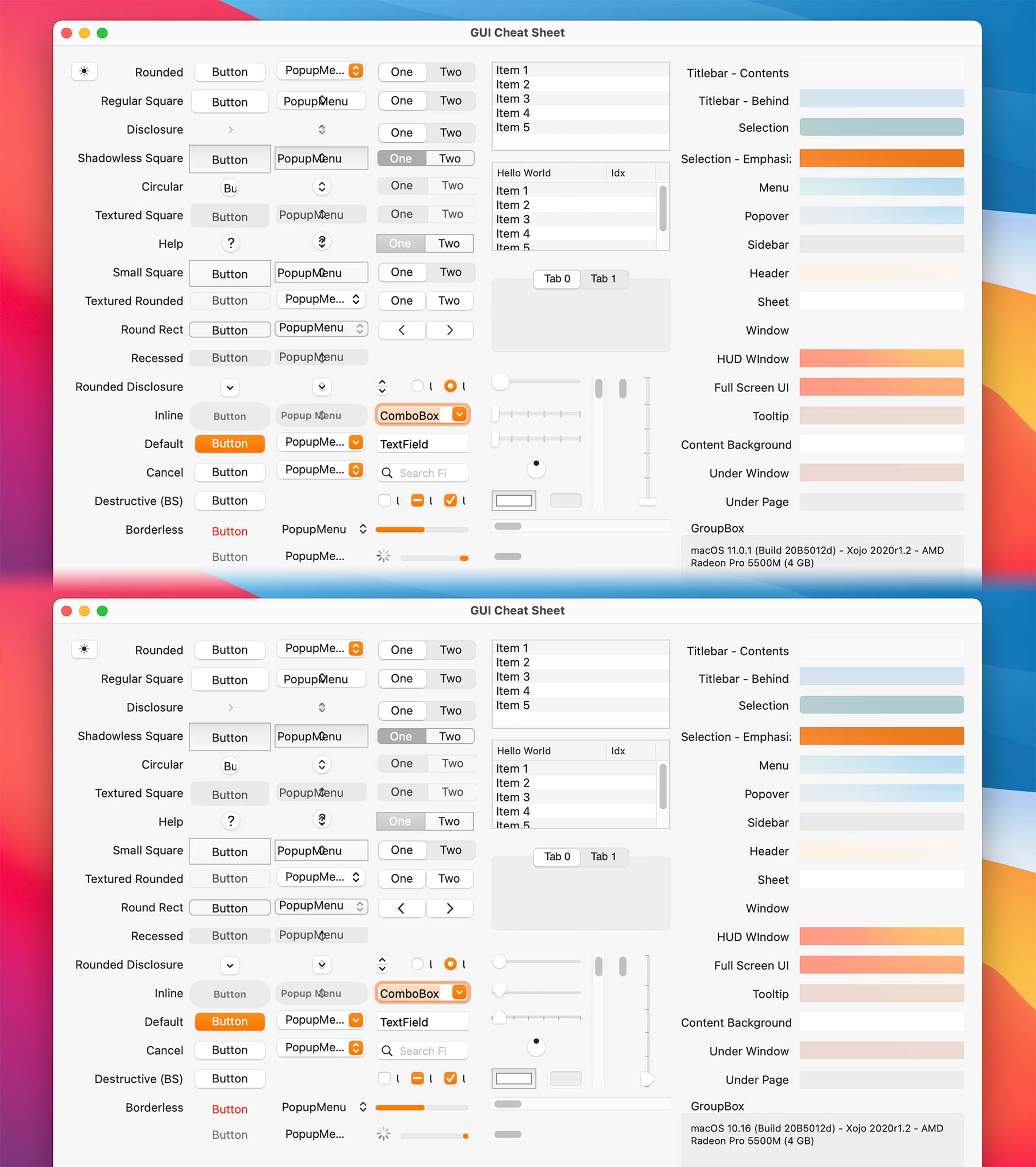Friday, November 27, 2020
Tags
- 10.16
- 11.0
- App Wrapper
- Big Sur
- Development
- Ohanaware App Kit
- Xojo
macOS 11.0 or 10.16 - Spot the difference
Friday, November 27, 2020 - Sam Rowlands
- Comparing Iconographer Mini
- Comparing App Wrapper 4
- Others
- How do I get macOS 11.0 with my Xojo made app?
- Why is this?
Below is a a comparison of Iconographer Mini running on macOS 11.0 (top) and macOS 10.16 (bottom).
Click the image for a closer view
Looks like the differences are the unified titlebar & toolbar, and sliders.
Big Sur includes a whole bunch of Toolbar Styles, to see the differences read Big Sur's Big Toolbar Styles.
What about App Wrapper 4?

Click the image for a closer view
Pretty much the same story here. The top image of macOS 11.0 looks more consistent with Apple's apps than the bottom (10.16).
In fact the bottom one is terrible because the partial toolbar is no longer partial. Although the Proxy icon is now always present!
The other difference here is the Toolbar Search Field, under macOS 11.0 it resizes to a small icon, whereas macOS 10.16, it's a permanently wide search field.1.
1. The auto shrinking icon requires additional code. The Ohanaware App Kit 1.2 will include this code needed to make this work in your Xojo application.
There must be others?
I agree there, so let us take a look at the GUI Cheat sheet below. Click it for a closer view.
Compare it to the GUI cheat sheet from July 2020 (macOS 10.16 v.s. macOS 10.15).

Maybe not. It really seems like it is just unified title + toolbar and sliders. If you know of something that's not visible here Send me a message.
Getting macOS 11.0 with a Xojo made Intel app?
Xojo made ARM Mac apps require macOS 11 Big Sur by default, but not Intel apps. I have an article on this, Its a continuation of my "Preparing your Xojo made Mac App for Big Sur". Click here to read it.
Why is this?
Since early 2000s, new Mac OS versions have been numbers like 10.0, 10.1, 10.2, 10.4 etc. Only the "minor" value of the version number has changed. With Big Sur, Apple wanted to change the "major" number, for the first time in 20 years. If software was written to check against the "minor" number only1, this would break apps 2. So until the developer chooses to notify the OS that their application is ready for macOS 11.0, it reports as 10.16.
So why make it have a different GUI? My guess is this is done to show developers that your application is running in a form of compatibility mode and needs to be updated to be 100% consistent with Apple's apps on macOS Big Sur.
- Apple has recommend against enabling/disabling features based on the OS version for many years. Developers should interrogate objects to see if they support new features or not. Ironically this method does not appear to work with Big Sur, so we ended up checking the OS version number!
- In recent years Apple hasn't appeared to care so much about breaking apps with OS updates.